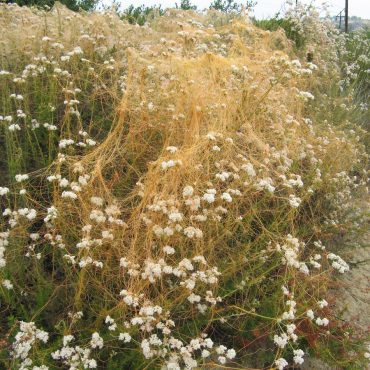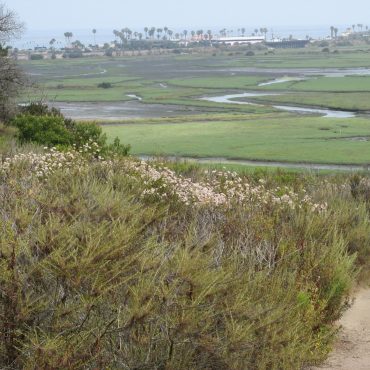California buckwheat (or flat-topped buckwheat, Eriogonum fasciculatum) is a prolific bloomer even in the long hot days of summer. The low, spreading shrub bears clusters of white to pinkish flowers, which become a conspicuous mahogany color in the fall. The small, narrow, rolled leaves resemble those of rosemary. This is not the buckwheat of pancake-fame, but it is an important nectar source for bees, and the resultant honey is delicious.
California Buckwheat
Eriogonum fasciculatum
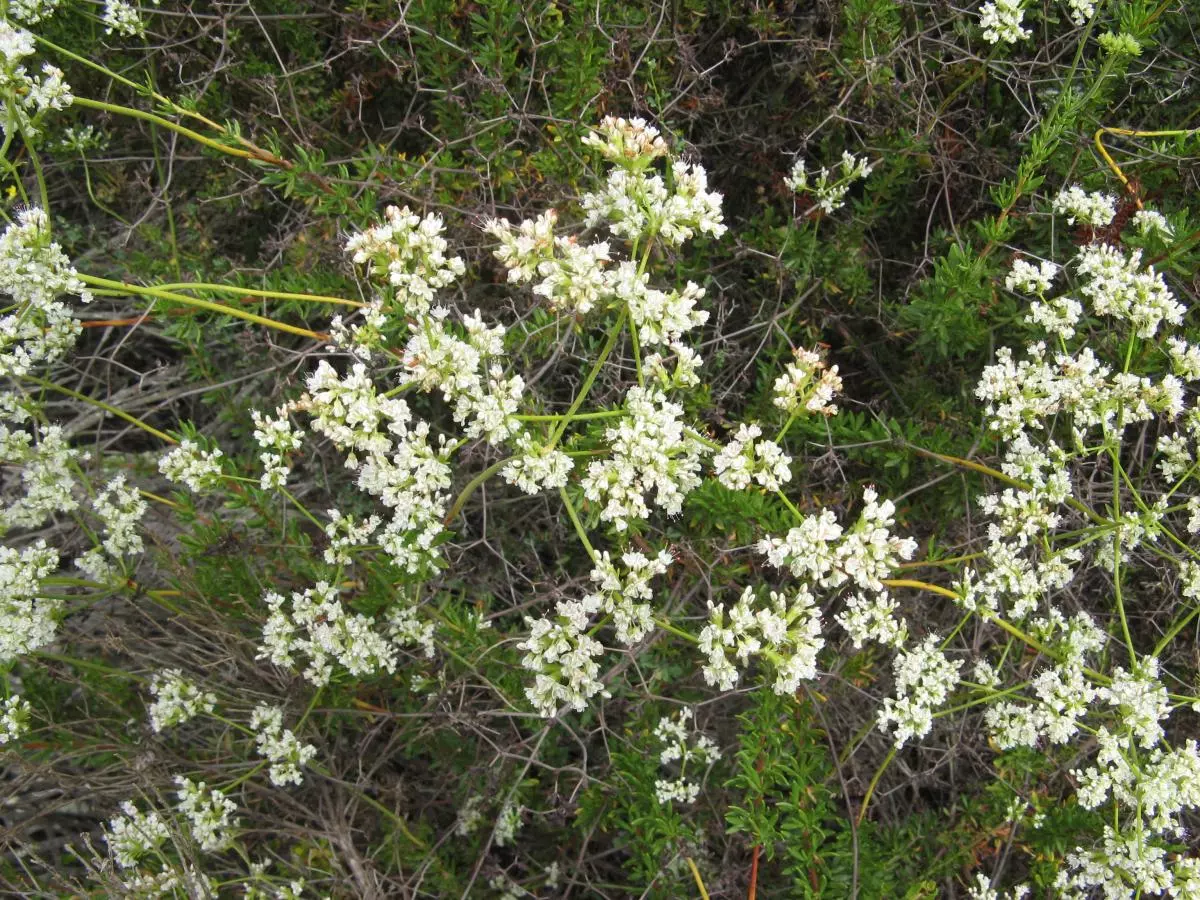
Other Common Names:
flat-top buckwheat
Description 1,2,4,24,27
Leaves are hard and leathery (sclerophyllous), narrow, linear and less than one inch (3 cm) in length; they are arranged in clusters along the stem. Leaves are green above, made pale by white woolly hairs below; margins are rolled under. Foliage resembles that of rosemary or chamise. Unlike many plants of the sage scrub, which replace their tender winter/spring leaves with smaller leaves during the dry months, buckwheat retains the same leaves, although under drought conditions, leaves may turn rusty brown or be shed entirely.36
Flowers are tiny 3/32-7/32 inches across, (3-5 mm) tightly arranged in flat-topped clusters. Petals are lacking and the six sepals resemble petals. Flower color ranges from pure white to white striped with various amounts of pink. Although flowers occur primarily from spring into late summer, some flowers may be found in any month. Dried flowers are rusty red in color and are retained on the plant well into the winter.
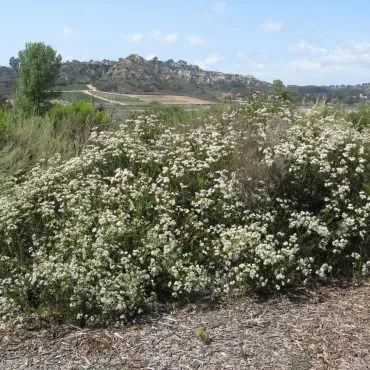
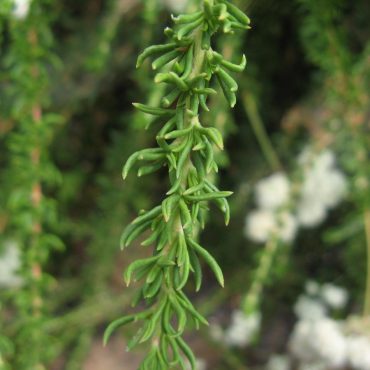
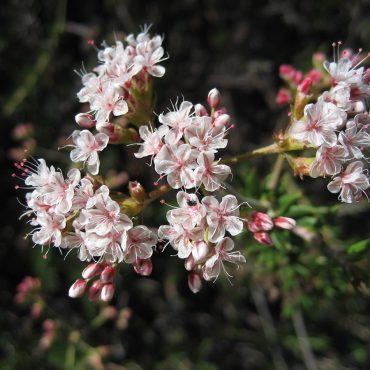
Distribution 7,8,27
California buckwheat is native to California and is restricted to Western North America. Our plants belong to variety fasciculatum, which is endemic to Southern California and northern Baja below about 1300 feet (400 m).
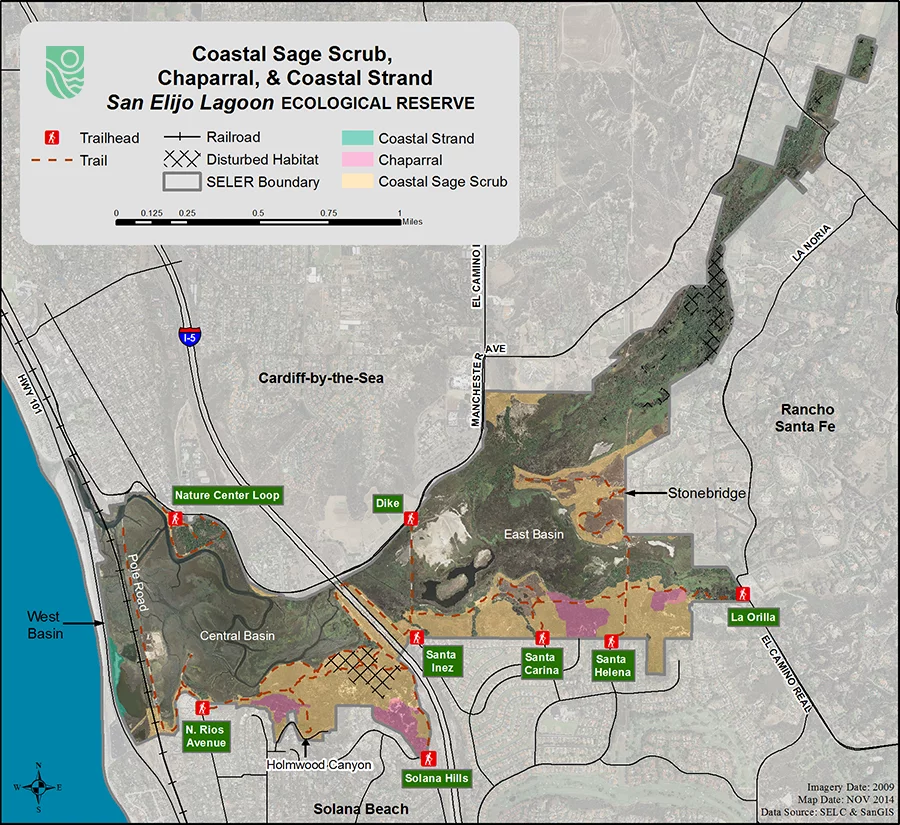
Classification
California buckwheat is a dicot angiosperm in the buckwheat family, the Polygonaceae.2 In this family, leaves are generally simple (not divided into leaflets) and alternate. Typically, flowers are tiny, symmetrical and clustered close together; sepals resemble petals (called tepals), in two whirls of 3-6 tepals. Fruit is usually small, dry and 1-seeded.11,34,44
Other familiar Polygonaceae include rhubarb and sorrel.
With over 125 species, Eriogonum is the largest dicot genus in California.24 Four species have been reported from The Reserve. Others are slender buckwheat (E. gracile), long-stem buckwheat (E. elongatum), and bluff buckwheat (E. parvifolium).48
Our variety, var. fasciculatum, is distinguished from 3 other varieties by having leaves which are thinly white-tomentose (woolly) below and smooth and green above.2
Jepson eFlora Taxon Page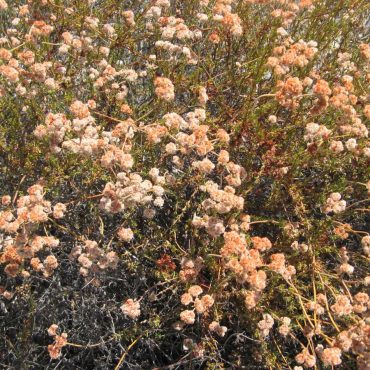
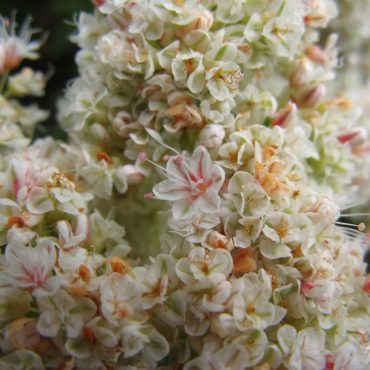
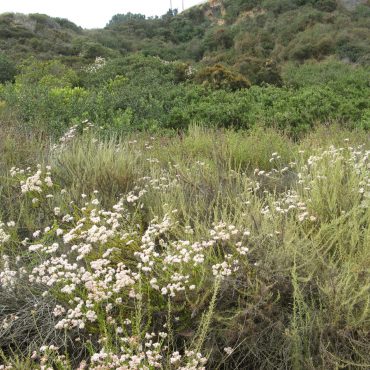
Ecology
The leaves of California buckwheat are small and leathery, the margins are rolled under (revolute), and the undersides are covered with fine hairs. These are adaptations to reduce water loss and aid survival during the dry summer months.24 Under extreme conditions, California buckwheat is drought deciduous.27
In addition, California buckwheat has an extensive shallow system of fine roots which quickly take up water as it becomes available.38
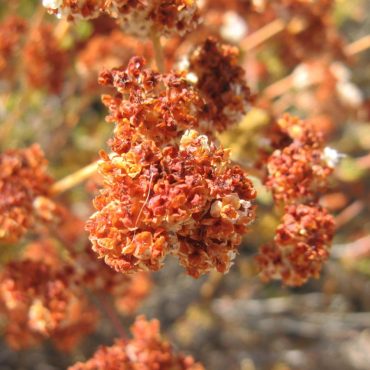
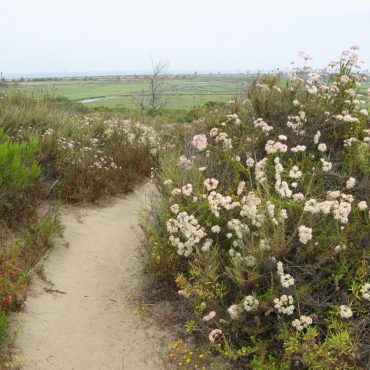
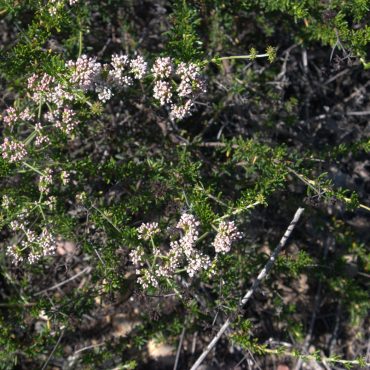
Human Uses
Buckwheat was an important medicinal plant for Native Americans. Kumeyaay (who called it Hamill) boiled flowers or leaves into a tea to be used as an eyewash, a mouthwash and a remedy for headaches, stomach aches and bladder infections.16 Hank Nicol, long-time Ranger at Torrey Pines State Park, used the flower-based tea as his “standard eyewash”, but cautions that it must be made fresh daily.32
The tiny seeds were gathered and ground into flour. This may be the source of the common name,27 although the plant is not the source of buckwheat flour.
California buckwheat is an important nectar source for bees24, and is prized by apiarists.
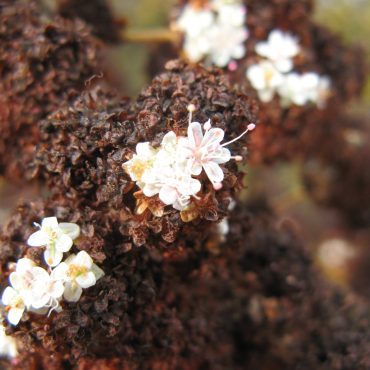
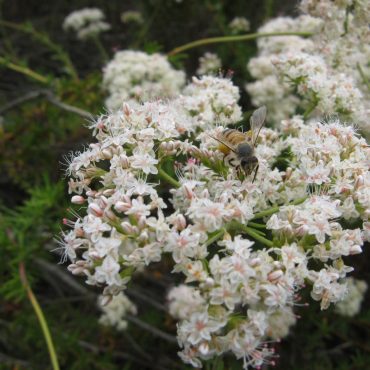
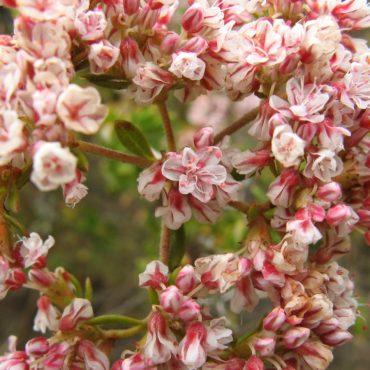
Interesting Facts
California buckwheat is one of the hosts of the parasitic dodder (or witch’s hair; Cuscuta californica).
Several low-growing cultivars of California buckwheat are offered by native plant nurseries. These make useful ground covers for the home garden.24
